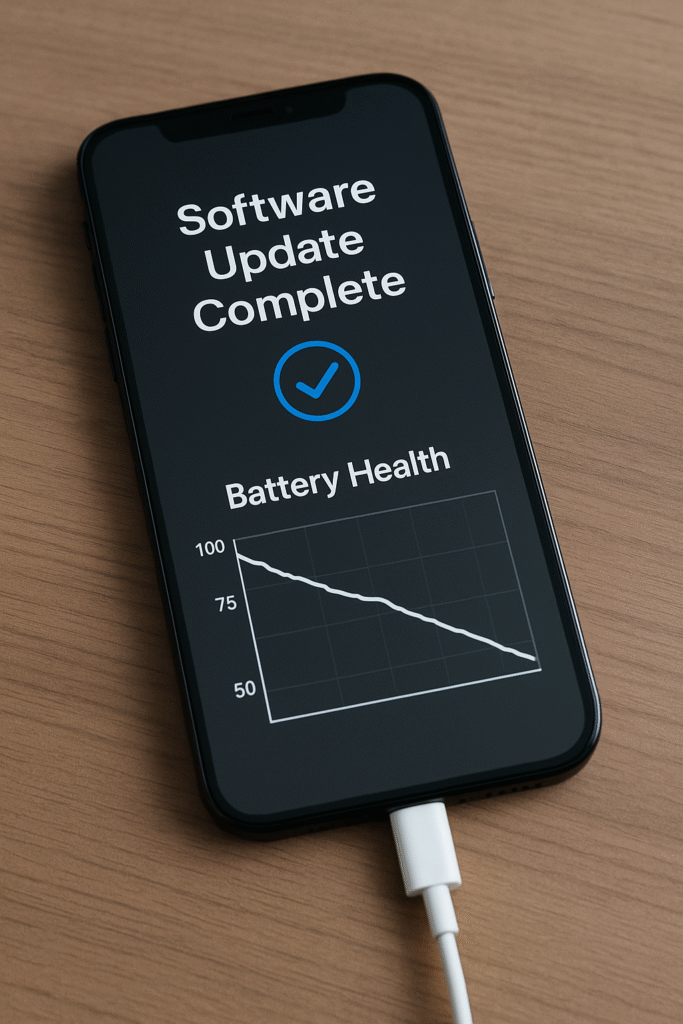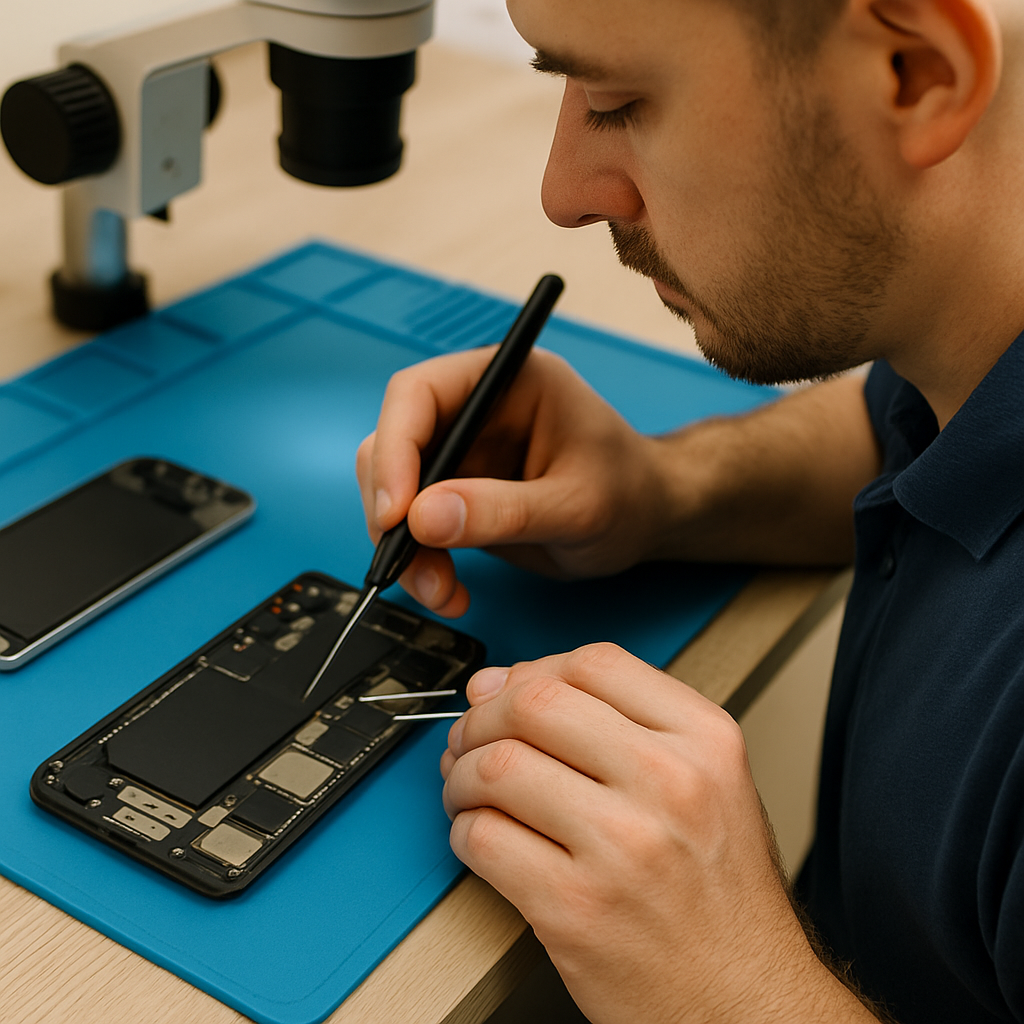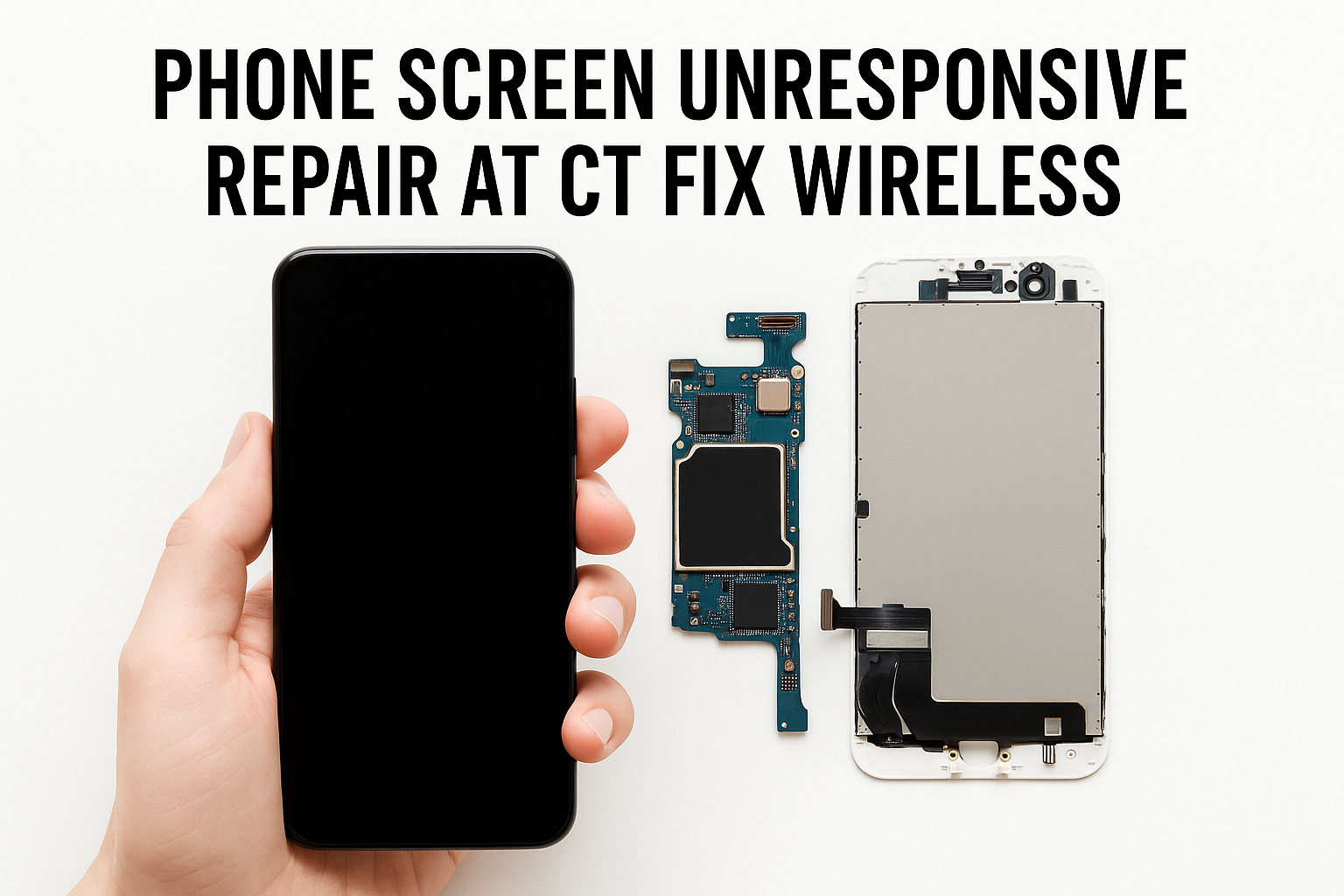
Have you ever updated your phone, only to realize the battery suddenly drains faster than before? You’re not alone. Many smartphone users experience rapid battery decline right after installing a new system update. These updates promise better performance, security, and new features — but often come with hidden effects on your battery’s overall health.
At CT Fix Wireless, our certified technicians have seen hundreds of cases where battery wear accelerates after updates. This guide will break down the why behind this issue, what you can do about it, and when it’s time to visit your local repair experts.
Section 1 – Understanding Battery Health and Software Updates
Your phone’s battery health reflects how efficiently it can hold a charge over time. When you buy a new device, the battery health is 100%, meaning it performs at full capacity. Over months and years, that percentage decreases — a natural effect of charge cycles and heat exposure.
Software updates, however, can accelerate that decline. Here’s how:
1. New Features Increase Power Demand
Updates often introduce advanced features — like improved camera processing, always-on displays, or enhanced background AI operations. While exciting, these consume more energy than older versions.
2. Recalibration of Battery Data
Every update triggers system recalibration — the software re-evaluates your battery capacity and adjusts its reporting. In some cases, the update simply becomes more honest, showing a lower health percentage that was previously hidden.
3. Background Optimization and Sync Tasks
After updating, the system re-indexes files, optimizes apps, and resyncs data to cloud services. This heavy processing can cause temporary heat and battery drain for several days.
4. Incompatibility with Old Apps
Outdated third-party apps may not align with the new OS, causing background loops or crashes that drain the battery quickly.
5. Thermal Management Changes
Some updates adjust how your phone handles heat. While this prevents damage, it can slightly reduce performance and power efficiency.
To understand whether the update or the hardware is to blame, it’s important to analyze your battery performance over time.
If you notice drastic changes, schedule a diagnostic check with our technicians — we’ll test both software and hardware components.
Section 2 – Key Reasons Your Battery Drains Faster After Updates
Let’s explore the most common culprits behind the post-update battery slump.
1. New Operating System Demands
Modern operating systems are heavier. A phone designed for an earlier OS might struggle with the latest version, forcing it to use more processing power — and thus more battery — to run the same tasks.
2. Background App Refresh
Each app updates to remain compatible with the system. During this process, apps re-download data, fetch new content, and perform background tasks continuously, consuming energy even when you’re not using them.
3. Temporary Battery Re-Calibration
Your phone’s algorithm recalculates charge cycles after an update. This might make your battery health indicator drop sharply, though actual capacity may not have changed dramatically.
4. Increased CPU and GPU Usage
Some updates boost visual performance, animations, and UI smoothness. The result? More load on your graphics and main processor — and more battery consumption.
5. New Security Protocols
Enhanced encryption and background scanning features introduced in updates can constantly monitor your system for threats, which may subtly impact battery performance.
If these changes persist for over a week, it’s a sign your phone’s battery might not be adapting well — time to get it professionally checked at CT Fix Wireless Repair Services.
Section 3 – How Software Updates Affect Different Phone Brands
Apple (iPhone)
Apple’s updates are designed for uniformity, but older iPhones often experience noticeable battery degradation after major iOS upgrades. The recalibration process and additional background tasks — like iCloud Photos, indexing, or Spotlight Search — consume significant power.
If your iPhone’s battery health drops below 80%, Apple’s system limits peak performance to prevent random shutdowns.
At this stage, a battery replacement restores not just charge life but also performance stability.
Android (Various Manufacturers)
Android phones are diverse — Samsung, Pixel, Huawei, and others all handle updates differently. Some brands push large OS files that introduce background AI, adaptive brightness, and auto-optimization that might tax the processor more.
Inconsistent app optimization across models can cause erratic drain until future patches fix it.
Section 4 – Practical Steps to Protect Your Battery After Updates
If you’ve noticed faster drain after an update, try these expert-approved steps to slow down the damage.
1. Perform a Clean Restart
After installation, restart your phone twice. This helps finalize installation scripts and removes any temporary glitches in battery reporting.
2. Calibrate Your Battery
Let the battery drain completely, then charge it to 100% without interruption. Do this once after a major update to help the system relearn full capacity boundaries.
3. Turn Off Background Refresh
Disable auto-sync for apps like Mail, Facebook, or Instagram if not needed. These background processes are notorious for power consumption after updates.
4. Avoid Overcharging
Keep charge levels between 20–80%. Prolonged charging to 100% can generate heat, reducing long-term health.
5. Update Apps Manually
Instead of letting all apps auto-update simultaneously, manually update critical ones first. This avoids multiple background installations occurring together.
6. Check Battery Usage Reports
Under Settings > Battery, identify which apps spike in usage after updates. Uninstall or restrict the ones consuming more power than usual.
7. Seek Professional Inspection
If you see sudden drops (for example, 40% to 5% within minutes), this may signal a failing battery or logic-board issue.
Visit CT Fix Wireless for a same-day diagnostic and instant quote — we’ll determine whether a software reset, new battery, or micro-repair is required.
Section 5 – Long-Term Battery Care Tips After Major Updates
1. Avoid Beta Software
Early releases often contain unoptimized code that drains the battery. Stick to official versions.
2. Enable Battery Optimization Mode
Modern phones include power-saving or adaptive battery modes. These restrict background tasks intelligently, extending battery life.
3. Limit Push Notifications
Each notification wakes the processor and display — reduce unnecessary alerts to save energy.
4. Keep the Device Cool
Heat accelerates lithium-ion aging. Avoid gaming or charging under direct sunlight, especially after updates that increase processor load.
5. Replace Batteries Before They Fail
A declining battery strains internal components and logic circuits. Regular replacement keeps your phone efficient and protects hardware integrity.
For reliable service, head to CT Fix Wireless Repair Center — we use premium-grade replacement cells backed by warranty.
Section 6 – When Software Isn’t the Only Culprit
Sometimes, software updates expose underlying hardware weaknesses.
- Worn-out batteries: If your device is 2+ years old, capacity loss is expected — updates merely highlight it.
- Power IC damage: Hardware controlling charging and distribution might weaken from heat or surge, causing rapid percentage drops.
- Corrupted charging circuits: Dust, moisture, or connector wear leads to unstable charging patterns.
- Motherboard issues: Faulty logic boards misreport power data, leading to erratic health readings.
If you suspect these issues, it’s best to get a professional evaluation to prevent further internal damage.
Section 7 – Signs It’s Time for a Battery Replacement
- Battery drains more than 30% overnight even in standby mode.
- Device overheats during normal tasks.
- The back panel bulges slightly.
- Sudden shutdowns occur despite 40–50% charge.
- Battery health in settings shows below 80%.
Ignoring these symptoms could lead to performance throttling, app crashes, or even board damage.
Get a replacement quote today and restore your phone’s efficiency instantly.
Section 8 – Why CT Fix Wireless Is the Right Choice
At CT Fix Wireless, we understand how frustrating battery decline can be — especially after an update meant to improve performance.
Here’s why our customers trust us:
- Expert diagnostics: We test both hardware and firmware interactions.
- Premium batteries: Only top-tier, factory-grade replacements are used.
- Transparent pricing: No hidden fees — get your instant quote anytime.
- Buy & Sell Options: Upgrade or trade devices at Buy and Sell.
- Trusted Reputation: Learn more on our About Us page — our mission is quality repair and honest service.
- Easy Contact: Reach out directly through Contact Us for quick support.
Section 9 – Conclusion and Final Thoughts
Battery health decline after software updates is more common than you think — but rarely irreversible. By understanding how updates affect your phone’s system, monitoring usage, and seeking timely repairs, you can keep your battery lasting longer.
If you’ve recently updated your phone and noticed faster drain, don’t ignore it. Get a full diagnostic at CT Fix Wireless — our specialists will identify whether the issue is software, hardware, or both.
FAQs
Q1: Why does my battery drain faster right after an update?
A: Your phone re-indexes and optimizes background data after updates. This process temporarily increases CPU load and power consumption.
Q2: Can software updates permanently reduce battery life?
A: Not directly — but updates can expose aging batteries, making degradation more noticeable.
Q3: Should I avoid updating my phone to save battery life?
A: No. Updates are crucial for security. Instead, manage settings and calibrate your battery after each update.
Q4: How long does it take for battery performance to normalize after an update?
A: Usually 3–7 days. If the drain continues, get a professional checkup.
Q5: Can CT Fix Wireless replace my phone battery the same day?
A: Yes. Most replacements are completed within 30–45 minutes using certified batteries backed by warranty.
Disclaimer
This content is for informational purposes only. Battery performance can vary depending on model, age, and user habits. Always seek professional evaluation before attempting hardware repairs.



